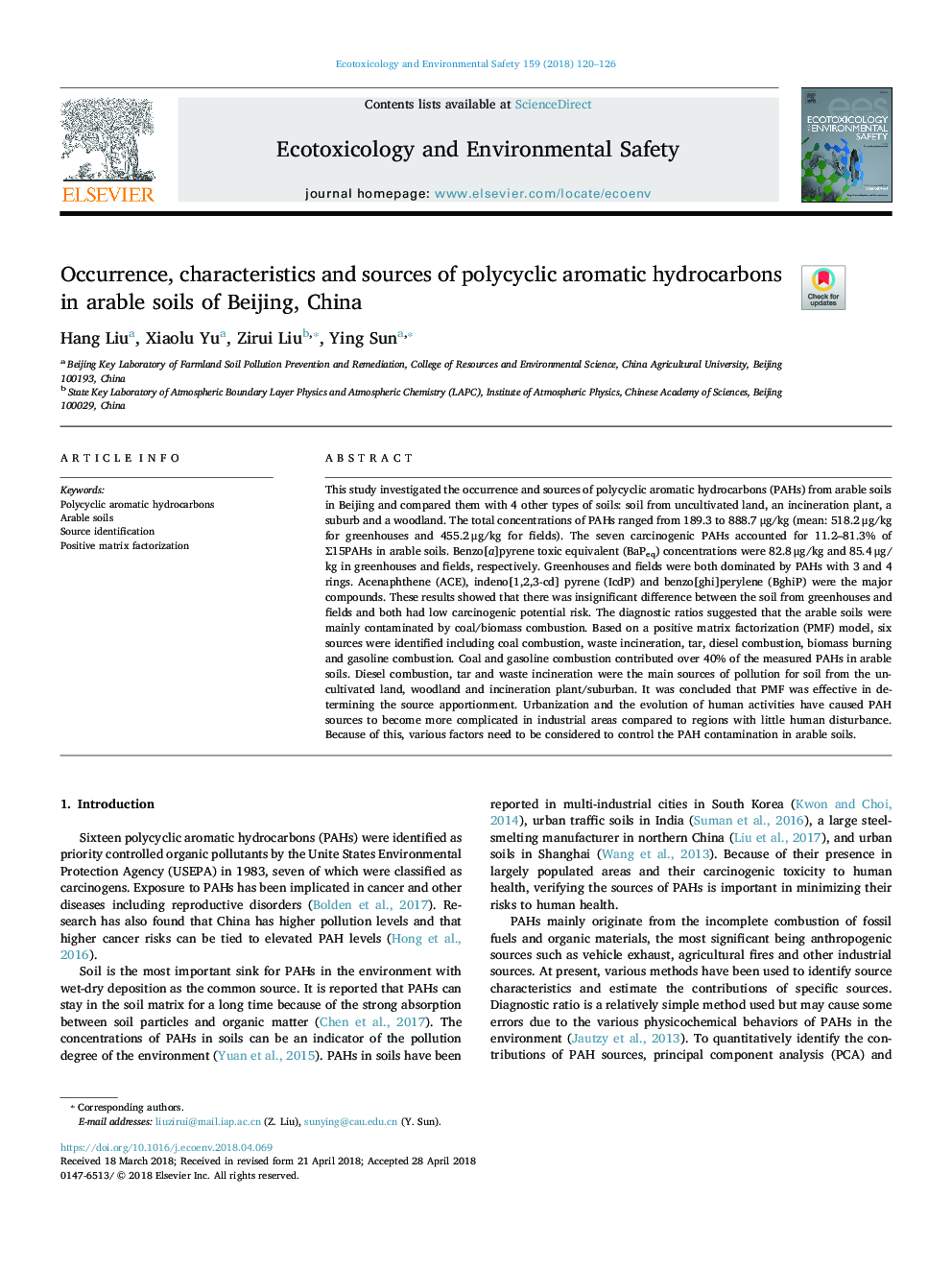| Article ID | Journal | Published Year | Pages | File Type |
|---|---|---|---|---|
| 8853651 | Ecotoxicology and Environmental Safety | 2018 | 7 Pages |
Abstract
This study investigated the occurrence and sources of polycyclic aromatic hydrocarbons (PAHs) from arable soils in Beijing and compared them with 4 other types of soils: soil from uncultivated land, an incineration plant, a suburb and a woodland. The total concentrations of PAHs ranged from 189.3 to 888.7â¯Î¼g/kg (mean: 518.2â¯Î¼g/kg for greenhouses and 455.2â¯Î¼g/kg for fields). The seven carcinogenic PAHs accounted for 11.2-81.3% of Σ15PAHs in arable soils. Benzo[a]pyrene toxic equivalent (BaPeq) concentrations were 82.8â¯Î¼g/kg and 85.4â¯Î¼g/kg in greenhouses and fields, respectively. Greenhouses and fields were both dominated by PAHs with 3 and 4 rings. Acenaphthene (ACE), indeno[1,2,3-cd] pyrene (IcdP) and benzo[ghi]perylene (BghiP) were the major compounds. These results showed that there was insignificant difference between the soil from greenhouses and fields and both had low carcinogenic potential risk. The diagnostic ratios suggested that the arable soils were mainly contaminated by coal/biomass combustion. Based on a positive matrix factorization (PMF) model, six sources were identified including coal combustion, waste incineration, tar, diesel combustion, biomass burning and gasoline combustion. Coal and gasoline combustion contributed over 40% of the measured PAHs in arable soils. Diesel combustion, tar and waste incineration were the main sources of pollution for soil from the uncultivated land, woodland and incineration plant/suburban. It was concluded that PMF was effective in determining the source apportionment. Urbanization and the evolution of human activities have caused PAH sources to become more complicated in industrial areas compared to regions with little human disturbance. Because of this, various factors need to be considered to control the PAH contamination in arable soils.
Keywords
Related Topics
Life Sciences
Environmental Science
Environmental Chemistry
Authors
Hang Liu, Xiaolu Yu, Zirui Liu, Ying Sun,
